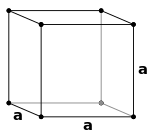is the natural science that involves the study of matter and its motion through space and time, along with related concepts such as energy and force. More broadly, it is the general analysis of nature, conducted in order to understand how the universe behaves.
Physics is one of the oldest academic disciplines, perhaps the oldest through its inclusion of astronomy.Over the last two millennia, physics was a part of natural philosophy along with chemistry, certain branches of mathematics, and biology, but during the Scientific Revolution in the 17th century, the natural sciences emerged as unique research programs in their own right. Physics intersects with many interdisciplinary areas of research, such as biophysics and quantum chemistry, and the boundaries of physics are not rigidly defined. New ideas in physics often explain the fundamental mechanisms of other sciences while opening new avenues of research in areas such as mathematics and philosophy.
Physics also makes significant contributions through advances in new technologies that arise from theoretical breakthroughs. For example, advances in the understanding of electromagnetism or nuclear physics led directly to the development of new products which have dramatically transformed modern-day society, such as television, computers, domestic appliances, and nuclear weapons; advances in thermodynamics led to the development of industrialization; and advances in mechanics inspired the development of calculus.
Modern physics began in the early 20th century with the work of Max Planck in quantum theory and Albert Einstein's theory of relativity. Classical mechanics predicted a varying speed of light, which could not be resolved with the constant speed predicted by Maxwell's equations of electromagnetism; this discrepancy was corrected by Einstein's theory of special relativity, which replaced classical mechanics for fast-moving bodies and allowed for a constant speed of light. Black body radiation
provided another problem for classical physics, which was corrected
when Planck proposed that light comes in individual packets known as photons; this, along with the photoelectric effect and a complete theory predicting discrete energy levels of electron orbitals, led to the theory of quantum mechanics taking over from classical physics at very small scales.
Quantum mechanics would come to be pioneered by Werner Heisenberg, Erwin Schrödinger and Paul Dirac. From this early work, and work in related fields, the Standard Model of particle physics was derived. Following the discovery of a particle with properties consistent with the Higgs boson at CERN in 2012, all fundamental particles predicted by the standard model, and no others, appear to exist; however physics beyond the Standard Model, with theories such as super symmetry, is an active area of research.
The two chief theories of modern physics present a different picture
of the concepts of space, time, and matter from that presented by
classical physics. Quantum theory
is concerned with the discrete, rather than continuous, nature of many
phenomena at the atomic and subatomic level, and with the complementary
aspects of particles and waves in the description of such phenomena. The
theory of relativity is concerned with the description of phenomena that take place in a frame of reference that is in motion with respect to an observer; the special theory of relativity is concerned with relative uniform motion in a straight line and the general theory of relativity with accelerated motion and its connection with gravitation. Both quantum theory and the theory of relativity find applications in all areas of modern physics .
Ontology
is a prerequisite for physics, but not for mathematics. It means
physics is ultimately concerned with descriptions of the real world,
while mathematics is concerned with abstract patterns, even beyond the
real world. Thus physics statements are synthetic, while math statements
are analytic. Mathematics contains hypotheses, while physics contains
theories. Mathematics statements have to be only logically true, while
predictions of physics statements must match observed and experimental
data.
The distinction is clear-cut, but not always obvious. For example,
mathematical physics is the application of mathematics in physics. Its
methods are mathematical, but its subject is physical. The problems in this field start with a "math model of a physical situation"
and a "math description of a physical law". Every math statement used
for solution has a hard-to-find physical meaning.
Physics is a branch of fundamental science, not practical science. Physics is also called "the fundamental science" because the subject of study of all branches of natural science like chemistry, astronomy, geology and biology are constrained by laws of physics, similar to how chemistry is often called the central science because of its role in linking the physical sciences. For example, chemistry studies properties, structures, and reactions of matter (chemistry's focus on the atomic scale distinguishes it from physics).
Structures are formed because particles exert electrical forces on each
other, properties include physical characteristics of given substances,
and reactions are bound by laws of physics, like conservation of
energy, mass and charge.
Physics is applied in industries like engineering and medicine.
APPLIED PHYSICS
Applied physics is a general term for physics research which is intended for a particular use. An applied physics curriculum usually contains a few classes in an applied discipline, like geology or electrical engineering. It usually differs from engineering
in that an applied physicist may not be designing something in
particular, but rather is using physics or conducting physics research
with the aim of developing new technologies or solving a problem.
The approach is similar to that of applied mathematics. Applied physicists can also be interested in the use of physics for scientific research. For instance, people working on accelerator physics might seek to build better particle detectors for research in theoretical physics.
Physics is used heavily in engineering. For example, statics, a subfield of mechanics, is used in the building of bridges and other static structures. The understanding and use of acoustics results in sound control and better concert halls; similarly, the use of optics creates better optical devices. An understanding of physics makes for more realistic flight simulators, video games, and movies, and is often critical in forensic investigations.
CONDENSED MATTER PHYSICS
Condensed matter physics is the field of physics that deals with the macroscopic physical properties of matter. In particular, it is concerned with the "condensed" phases that appear whenever the number of particles in a system is extremely large and the interactions between them are strong.
The most familiar examples of condensed phases are solids and liquids, which arise from the bonding by way of the electromagnetic force between atoms. More exotic condensed phases include the superfluid and the Bose–Einstein condensate found in certain atomic systems at very low temperature, the superconducting phase exhibited by conduction electrons in certain materials, and the ferromagnetic and antiferromagnetic phases of spins on atomic lattices.
Condensed matter physics is the largest field of contemporary physics. condensed matter physics grew out of solid-state physics, which is now considered one of its main subfields.The term
condensed matter physics was apparently coined by Philip Anderson when he renamed his research group—previously
solid-state theory—in 1967. In 1978, the Division of Solid State Physics of the American Physical Society was renamed as the Division of Condensed Matter Physics. Condensed matter physics has a large overlap with chemistry, materials science, nanotechnology and engineering.
Atomic, molecular, and optical physics
Atomic, molecular, and optical physics (AMO) is the study of matter–matter and light–matter interactions on the scale of single atoms
and molecules. The three areas are grouped together because of their
interrelationships, the similarity of methods used, and the commonality
of their relevant energy scales. All three areas include both classical, semi-classical and quantum treatments; they can treat their subject from a microscopic view (in contrast to a macroscopic view).
Atomic physics
Atomic physics studies the electron shells of atoms. Current research focuses on activities in quantum control, cooling and trapping of atoms and ions,
low-temperature collision dynamics and the effects of electron
correlation on structure and dynamics. Atomic physics is influenced by
the nucleus (see, e.g., hyperfine splitting), but intra-nuclear phenomena such as fission and fusion are considered part of high-energy physics.
Molecular physics
Molecular physics focuses on multi-atomic structures and their internal and external interactions with matter and light. Optical physics is distinct from optics
in that it tends to focus not on the control of classical light fields
by macroscopic objects, but on the fundamental properties of optical fields and their interactions with matter .
Particle physics
Particle physics is the study of the elementary constituents of matter and energy, and the interactions between them. In addition, particle physicists design and develop the high energy accelerators, detectors,
and computer programs
necessary for this research. The field is also called "high-energy
physics" because many elementary particles do not occur naturally, but
are created only during high-energy collisions of other particles.
Nuclear physics
Nuclear Physics is the field of physics that studies the constituents and interactions of atomic nuclei. The most commonly known applications of nuclear physics are nuclear power generation and nuclear weapons technology, but the research has provided application in many fields, including those in nuclear medicine and magnetic resonance imaging, ion implantation in materials engineering, and radiocarbon dating in geology and archaeology.
Astrophysics
Astrophysics and astronomy are the application of the theories and methods of physics to the study of stellar structure, stellar evolution, the origin of the solar system, and related problems of cosmology.
Because astrophysics is a broad subject, astrophysicists typically
apply many disciplines of physics, including mechanics,
electromagnetism, statistical mechanics, thermodynamics, quantum
mechanics, relativity, nuclear and particle physics, and atomic and
molecular physics.
The discovery by Karl Jansky in 1931 that radio signals were emitted by celestial bodies initiated the science of radio astronomy.
Most recently, the frontiers of astronomy have been expanded by space
exploration. Perturbations and interference from the earth's atmosphere
make space-based observations necessary for infrared, ultraviolet, gamma-ray, and X-ray astronomy.
Physical cosmology
is the study of the formation and evolution of the universe on its
largest scales. Albert Einstein's theory of relativity plays a central
role in all modern cosmological theories. In the early 20th century, Hubble's discovery that the universe is expanding, as shown by the Hubble diagram, prompted rival explanations known as the steady state universe and the Big Bang.

 involves also finding the specific function
involves also finding the specific function  which describes that energy state. The solution of the time independent Schrodinger equation takes the form
which describes that energy state. The solution of the time independent Schrodinger equation takes the form


 i.e., the derivative of the velocity vector as a function of time.
i.e., the derivative of the velocity vector as a function of time. divided by the duration of the period
divided by the duration of the period 



